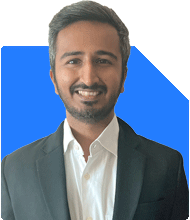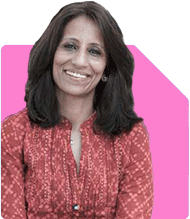Ramalingam Kalirajan |10878 Answers |Ask -Follow
Mutual Funds, Financial Planning Expert - Answered on Jul 10, 2024
He has an MBA in finance from the University of Madras and is a certified financial planner.
He is the director and chief financial planner at Holistic Investment, a Chennai-based firm that offers financial planning and wealth management advice.... more

Hello Sir, I am 37 years old and my wife is 35 years old and we have 1.5 year old daughter. We both collectively earn 305000 Per Month after taxes (Private Job) I have an active home loan of total outstanding of 51 lakh out of 80 lakh (taken 2.5 years back) and currently I am paying 81000 EMI towards that. I have already made repayment of approximately 20 lakh in the past 18 months. Total loan tenure left is around 7.5 years. I have a loan from family members (non interest) 8 lkh which can be repaid as per flexibility. I have 4 LIC Polices for which I am paying 110000 annually and One HDFC ulip plan which is 15K annual. I have approximately 20 lakh in savings (all FDs), we have collective PF balance of 8 lakh and recently I have started investing in mutual funds SIP details are as following 10K SIP - Axis Mid Cap 5K SIP - Axis small Cap 5K SIP - HDFC mid Cap opportunity 2K SIP - Axis Multi Cap. After my monthly expenses, I am left with 1 lakh in hand monthly. I would need your suggestion on how to meet my personal financial goal of 3.5 cr in the next 15 years. I want to make sure I will have substantial funds in hand for My child's education/ Marriage and something for own when we retire. Please advise. Thank you
Income and Expenses
Monthly income: Rs 3,05,000 (after taxes).
Monthly expenses: Rs 2,05,000, leaving Rs 1,00,000 in hand.
Current Liabilities
Home loan: Rs 51 lakhs outstanding, Rs 81,000 EMI, tenure left: 7.5 years.
Family loan: Rs 8 lakhs, no interest, flexible repayment.
Current Investments
Savings (FDs): Rs 20 lakhs.
Collective PF balance: Rs 8 lakhs.
LIC policies: Rs 1,10,000 annually.
HDFC ULIP plan: Rs 15,000 annually.
SIPs: Rs 10,000 in Axis Mid Cap, Rs 5,000 in Axis Small Cap, Rs 5,000 in HDFC Mid Cap Opportunity, and Rs 2,000 in Axis Multi Cap.
Financial Goals
Goal: Rs 3.5 crores in 15 years for child's education/marriage and retirement.
Evaluating Your Investment Strategy
Current SIPs and Mutual Funds
Investing in mutual funds through SIPs is a wise decision for long-term growth.
Axis Mid Cap, Axis Small Cap, HDFC Mid Cap Opportunity, and Axis Multi Cap are good choices.
Consider diversifying your portfolio to include more funds from different categories.
LIC Policies and ULIP
LIC policies provide insurance but may offer lower returns compared to mutual funds.
ULIP plans combine insurance with investment but often have higher charges.
Evaluate the performance of these policies and consider if reallocating to mutual funds is beneficial.
Savings and Fixed Deposits
Rs 20 lakhs in FDs is a safe but low-return investment.
Consider moving a portion to higher-return instruments like mutual funds.
EPF and PPF
EPF balance of Rs 8 lakhs provides safety and tax benefits.
Continue contributing to EPF for long-term growth and security.
Strategy to Meet Financial Goals
Increasing SIPs
With Rs 1,00,000 left after expenses, you can increase your SIPs.
Prioritize mutual funds with a mix of large-cap, mid-cap, and multi-cap funds.
Aim to invest at least Rs 50,000 monthly in mutual funds.
Diversifying Mutual Funds
Diversify across equity, debt, and hybrid funds to balance risk and return.
Consider adding funds from different AMCs for better risk management.
Reviewing Insurance Policies
Review your LIC policies and ULIP plan.
If returns are not satisfactory, consider surrendering and reallocating to mutual funds.
Ensure you have adequate term insurance for life coverage.
Managing Liabilities
Home Loan
Focus on repaying the home loan to reduce interest burden.
With an Rs 81,000 EMI, prioritize repayment within the next 7.5 years.
Use bonuses or extra savings to make lump-sum repayments.
Family Loan
Flexible repayment terms allow you to prioritize other liabilities first.
Repay the family loan gradually as your financial situation improves.
Emergency Fund
Maintain an emergency fund to cover at least 6 months of expenses.
This ensures financial stability in case of unexpected events.
Long-Term Investment Strategy
Power of Compounding
Regular SIPs in mutual funds leverage the power of compounding.
Over 15 years, consistent investments can grow significantly.
Stay invested and avoid withdrawing prematurely.
Reviewing and Rebalancing
Regularly review your portfolio to ensure it aligns with your goals.
Rebalance periodically to maintain the desired asset allocation.
Tax Planning
Utilize tax-saving instruments like ELSS funds for better returns and tax benefits.
Continue contributing to EPF for additional tax savings.
Children's Education and Marriage
Start dedicated SIPs for your child's education and marriage.
Consider child-specific mutual funds or equity funds with a long-term horizon.
Final Insights
Stay Disciplined
Consistency in investing is key to achieving long-term goals.
Avoid timing the market and stay focused on your financial objectives.
Professional Guidance
Consulting a Certified Financial Planner (CFP) can provide personalized advice.
A CFP can help optimize your investment strategy and ensure you stay on track.
Long-Term Perspective
Keep a long-term perspective and avoid making decisions based on short-term market fluctuations.
The power of compounding works best with patience and regular investing.
Financial Security
By managing liabilities and investing wisely, you can achieve financial security.
Your disciplined approach will help you reach your financial goals.
Best Regards,
K. Ramalingam, MBA, CFP,
Chief Financial Planner,
www.holisticinvestment.in
You may like to see similar questions and answers below
Ramalingam Kalirajan |10878 Answers |Ask -Follow
Mutual Funds, Financial Planning Expert - Answered on May 13, 2024
Ramalingam Kalirajan |10878 Answers |Ask -Follow
Mutual Funds, Financial Planning Expert - Answered on Jul 13, 2024
Ramalingam Kalirajan |10878 Answers |Ask -Follow
Mutual Funds, Financial Planning Expert - Answered on Jul 15, 2024
Vivek Lala |323 Answers |Ask -Follow
Tax, MF Expert - Answered on Feb 11, 2025
Ramalingam Kalirajan |10878 Answers |Ask -Follow
Mutual Funds, Financial Planning Expert - Answered on Aug 04, 2025
Dr Nagarajan J S K |2577 Answers |Ask -Follow
NEET, Medical, Pharmacy Careers - Answered on Dec 10, 2025
Mayank Chandel |2570 Answers |Ask -Follow
IIT-JEE, NEET-UG, SAT, CLAT, CA, CS Exam Expert - Answered on Dec 10, 2025
Samraat Jadhav |2503 Answers |Ask -Follow
Stock Market Expert - Answered on Dec 10, 2025
Radheshyam Zanwar |6741 Answers |Ask -Follow
MHT-CET, IIT-JEE, NEET-UG Expert - Answered on Dec 10, 2025
Ramalingam Kalirajan |10878 Answers |Ask -Follow
Mutual Funds, Financial Planning Expert - Answered on Dec 10, 2025
Ramalingam Kalirajan |10878 Answers |Ask -Follow
Mutual Funds, Financial Planning Expert - Answered on Dec 10, 2025
Samraat Jadhav |2503 Answers |Ask -Follow
Stock Market Expert - Answered on Dec 10, 2025
Samraat Jadhav |2503 Answers |Ask -Follow
Stock Market Expert - Answered on Dec 10, 2025
Samraat Jadhav |2503 Answers |Ask -Follow
Stock Market Expert - Answered on Dec 10, 2025
Shalini Singh |180 Answers |Ask -Follow
Dating Coach - Answered on Dec 10, 2025









.jpg)

















